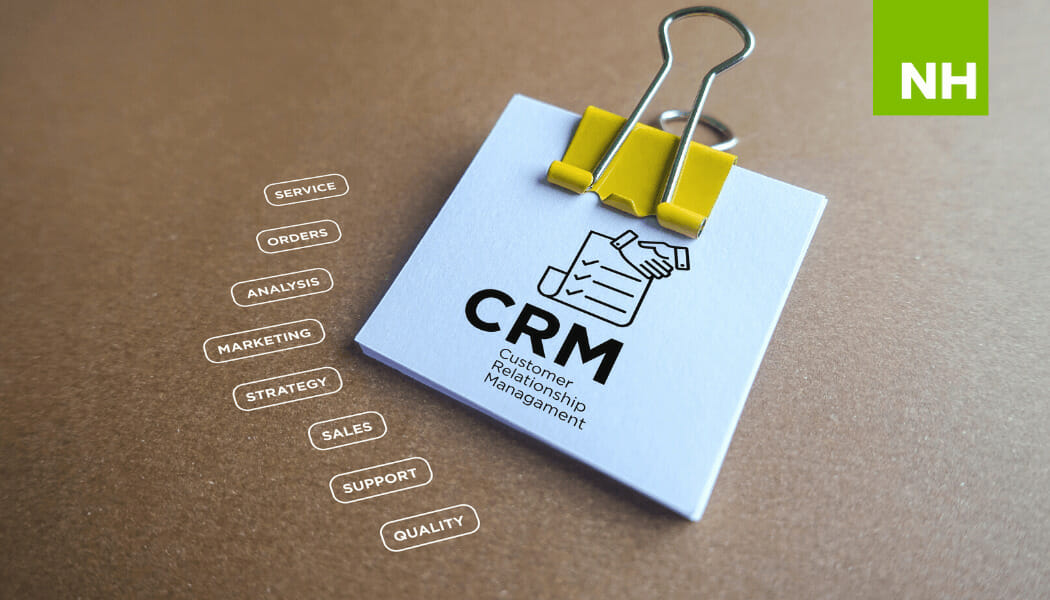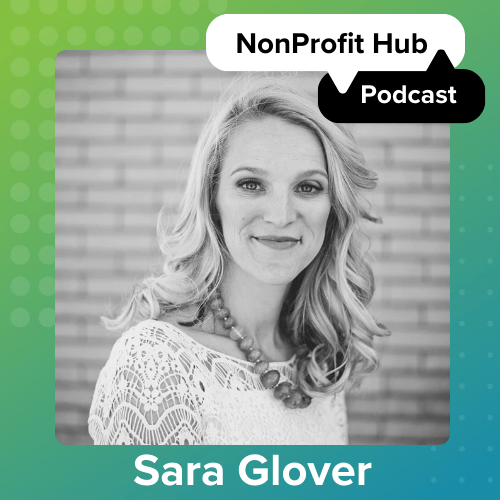Is anything scarier than a new nonprofit CRM?
Nonprofits have plenty on their plates. You might be doing everything from planning fundraising events and managing supporters to launching campaigns. Sound familiar? And as if that isn’t enough, the burden of the pandemic has been forcing mission-driven organizations to think creatively of new ways to engage and serve their constituents.
It is a huge understatement to say it can be time-consuming, inefficient, and downright messy without the right tools.
What is a nonprofit CRM?
Nonprofit CRM is software that stores and manages everything you know and cherish about your organization’s members, donors, and beneficiaries in a central location.
It can do a dizzying number of things, too. They can integrate with your website, automate emails, and connect with your accounting software. CRMs also can add a new type of supporter to your system, issue tax-compliant donation receipts, and increase charitable giving through personalized messages.
A CRM is also an orderly way to segment and slice the data to make informed decisions that convert to fundraising success.
How a CRM can benefit your nonprofit
A CRM can undoubtedly strengthen and expand opportunities that support your core mission.
From segmenting supporters by areas of interest to maintaining strong constituent relationships, tracking membership activities, and simplifying the donation process, a CRM can empower your nonprofit to manage your data effectively and confidently.
It will allow your entire team to feel the purpose in their work by having a system that takes care of the significant (not to mention menial) day-to-day administrative tasks like:
- tracking donations while campaigns are in progress
- automating acknowledgments and receipting
- recording every interaction with a constituent
- managing your finances and accounting
- assigning volunteers to activities
- pulling analytic reports
Sounds good, doesn’t it? There’s more. You can seamlessly integrate and sync your CRM with other third-party applications to manage your specific fundraising needs. You can sync up with platforms like QuickBooks, Gmail, Mailchimp, and DocuSign, among many more.
Why you need a nonprofit CRM
During the pandemic fallout, many nonprofits used technology that didn’t hold up well. To communicate effectively with donors and constituents, they had to evolve and adapt their data management systems to the new reality.
We’re in a time when supporters expect highly personalized, customer-centric experiences. Technology that’s dated or hasn’t kept up with your organization can prevent you from delivering a great donor experience. It stops you from working efficiently and ultimately raising more funds.
That’s why a CRM is a necessity.
You can weed out which parts of your operational process are time-wasters, giving you more time to focus on the important stuff.
Here are four reasons why a nonprofit CRM is an excellent investment.
1. Strengthen donor loyalty. Without donors, nonprofits can’t stay afloat. So, treat them like the valuable assets that they are.
According to a 2021 study from the Fundraising Effectiveness Project, Americans opened their wallets in 2020, increasing donations by 10.6% during the pandemic. The most significant boost was from new donors who gave more small-dollar gifts (at the same time, donor retention dropped by 4.1%).
According to the report, people gave to organizations they hadn’t given to before. This means that there’s ample opportunity for nonprofits to engage and nurture these new supporters for the long term. They can talk about the good work they’ve accomplished because of the support.
Handling and nurturing donor relationships with an outdated, manual system is a colossal task that involves many steps, people, and responsibilities. Imagine how awful it would be to forget to thank donors for their gifts.
A reliable CRM has features that make relationship management more manageable, so nobody gets missed. For instance, you can record every donor interaction you’ve ever had and what their giving habits are. You can set up reminders to send phone calls or thank you letters to major donors that they won’t forget.
2. Let your data do the heavy lifting.
Analytical CRM tools make your piles of data available, clear, and relevant to your nonprofit’s needs. It can even serve up those “a-ha” moments to be better every year.
To make critical, real-time decisions, you must trust that the information you aggregate is current and accurate. That’s a challenge if you’re pulling data from numerous platforms (email, social media, payment processor, online fundraising data), where it’s vulnerable to errors and missed fundraising opportunities.
To get stakeholders onboard with a CRM investment, you want to show that it will do more than just consolidate your data into the new software. It’ll impact everything from donor loyalty to data management and engagement to staff retention. Once equipped with these visible metrics, your supporters and backers will likely get excited about you investing in this tool.
3. Higher productivity and efficiency.
Having all your major everyday activities in one place makes for easier workflow, better collaboration between team members, better project management, and a simpler way to track resources and costs.
With a CRM, task automation removes tedious tasks so your team can focus on more challenging work. As mentioned earlier, dashboards and metrics can help you see the bigger picture of your mission and optimize several business processes.
4. Access your info from just about anywhere.
Supporting your staff, whether they’re fully remote, in the office, or a mix of both will be critical to the success of your nonprofit in a post-pandemic world. CRM products and features will allow your team to connect, share ideas, and get more done together, regardless of where they are.
Questions for your nonprofit team to ask when choosing a CRM
Your nonprofit is unique. So, the best CRM should include the features, support, and integrations that meet your specific needs. After all, the last thing you want to do is get stuck with software that doesn’t make sense for you.
- What do we want to get out of a CRM implementation? If you want to reach your maximum CRM potential, it’s best to have a CRM strategy. It should include setting challenging objectives that can have a lasting impact on your organization. For example, do you want to increase donor retention by 40% over the next two years? Surpass your 2021 fundraising goals by $100,000. Or configure reports so that you can build a case to apply for a large grant?
- How much data do we have? The number of constituent profiles a nonprofit can collect varies. Be sure to analyze how much donor data you have before buying.
- What do we need to track? The data you collect should be used to make your nonprofit more successful. To do that, think about the major information you need to capture to get a holistic view of your organization’s performance to boost your revenue.
- Is our entire team on board? A CRM will likely affect most of your employee’s jobs in some way. Talk to your team to get them on board and see what they hope to achieve from the new software. When you’re all on the same page, implementing the CRM and team training will run more smoothly.
- Can our CRM “talk” to other systems? It’s wise to integrate your CRM tools with any existing applications that you’re using. You can improve your productivity and workflow by removing the back and forth between apps. Though many organizations find it beneficial to use third-party applications, many CRMs offer native automation tools that will centralize your data and save you money in the long run.
- How fast can we get a CRM up and running? If you are already using a CRM, it depends on how much data you need to transfer to a new system, who needs access to your CRM, how big your team is, and how sophisticated your CRM automation is. If you’re starting from scratch, setup can happen quickly. If you find it daunting or don’t have the time, consider the services of a CRM software partner like cloudStack Services.
- Can we afford this? This is the first question or roadblock nonprofits face, as budget is almost always a driving factor in any decision. Consider immediate and ongoing costs, like integrations, licensing and system maintenance, and training when reviewing costs. Then there’s the most significant cost benefit: reducing manual tasks so your highly-skilled team can focus on more complex, productive work.
Key CRM features to look for
The best CRM will have loads of features, but a few are essential for you to consider. Here are four features that after often found to be the most useful.
- Data Reporting- Your nonprofit CRM should be able to generate all types of valuable reports—from financial transactions to campaign performances to donor behavior. A good CRM can even let you configure custom reports to give you a snapshot of which parts of your operations are working and which aren’t. With those insights, you can develop more targeted and appealing outreach strategies.
- Donor Management- Imagine having a complete view of your interactions with donors and the channels that spur them to take action. Or the ability to create donor personas, segments, and tags. A CRM will allow you to log emails, calls, social media engagements, and any other custom info that may help you nurture your donor relationships. Remember, the better your donor data, the higher your donor retention.
- List Segmentation Segmentation- allows you to subdivide your contact list into any number of customized, smaller lists using tags and filters. You can segment by geographical location, demographics, donation amounts, interactions with your organization, and more. By breaking down your lists, you can target and, more importantly, personalize messages to your leads and supporters to remind them that their gift matters. Take the Giving Tuesday campaign, for example. On this global giving day, you wouldn’t send your first-time donors and volunteers the same email. That’s because they’re at a different point on their journey with your nonprofit. The message they receive should echo that. List segmentation lets you write specific messages to each group and portray your ask in a way that inspires.
- Omni-channel integrations- A CRM has built-in features, whereas integrations bring in an outside tool. You’ll either want a CRM with all basic built-ins or one that supports integrations with the platforms you need like QuickBooks, Mailchimp, Eventbrite, and Shopify.
This spotlight blog is written by Paula Kehoe of Red Rock Communications.
Paula Kehoe is a freelance content writer specializing in B2B, SaaS, business, marketing, and lifestyle topics. She is a regular contributor to cloudStack Services, a Salesforce implementation partner for nonprofits.”







